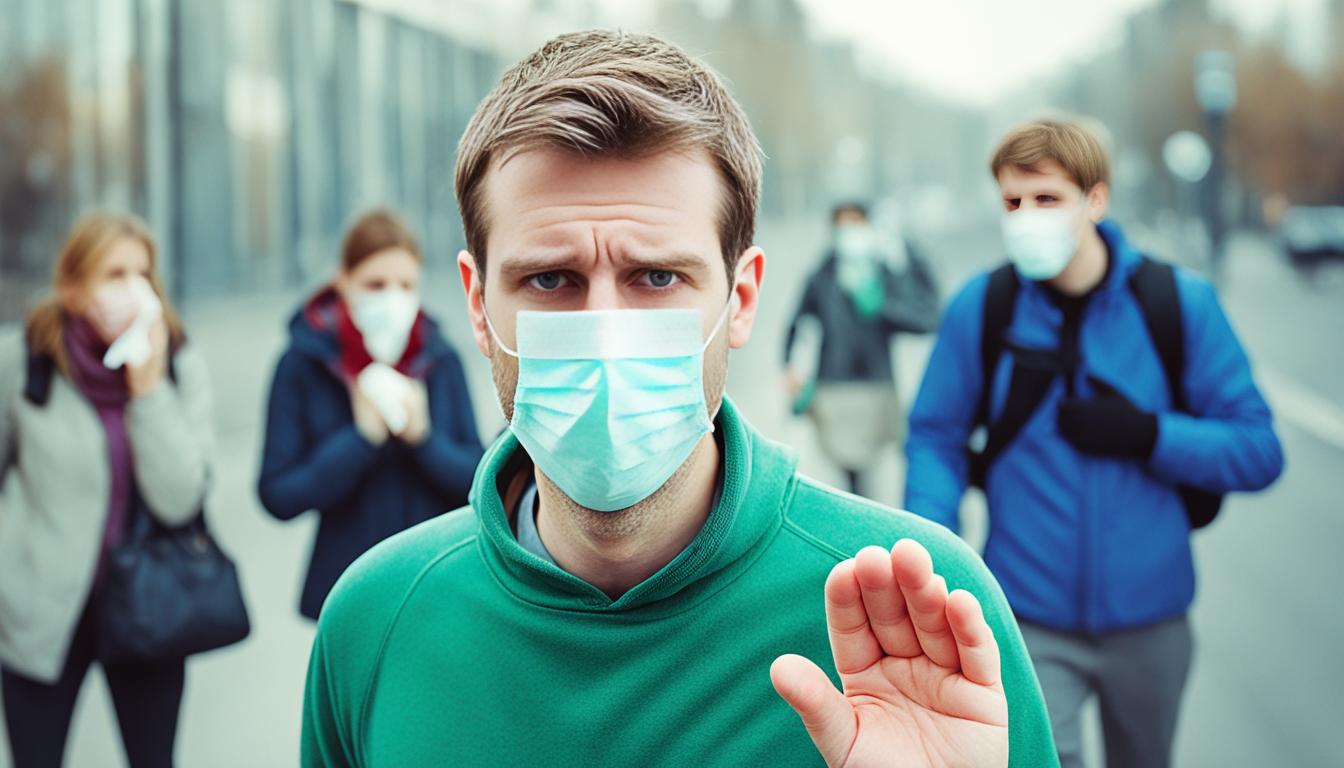Influenza swine flu, also known as H1N1 virus, is a respiratory disease. It is caused by a variant of the influenza A virus. First appearing in Mexico in 2009, it quickly spread worldwide. The virus spreads through direct or indirect contact and respiratory droplets.
Symptoms include fever, cough, and rhinorrhea, much like regular flu. In severe cases, it can lead to pneumonia and even death. Young adults are usually the most affected. But, pregnant women, young kids, and those with chronic lung issues are also at risk.
Diagnosis is through a special test called a polymerase chain reaction (PCR). This test looks for the virus in the patient’s body. Doctors often use antiviral drugs to help with the symptoms. Yet, experts are studying stem cell therapy for treating lung damage.
Key Takeaways:
- Influenza swine flu is an acute respiratory infectious disease caused by a new variant of the influenza A virus.
- Symptoms of swine flu include fever, cough, and rhinorrhea, much like regular flu.
- The virus affects mostly young adults but can be severe in high-risk groups.
- Diagnosis is done through a special test called polymerase chain reaction (PCR).
- Stem cell therapy is being explored as a treatment for lung damage from swine flu.
Global Prevalence and Epidemiology of Influenza A (H1N1)
In 2009, Influenza A (H1N1) broke out and spread worldwide really quickly. It became a pandemic, affecting 214 places. Swine flu hit young adults most, with almost the same number of cases in males and females. The virus’s spread was helped by air travel and quick communication between infected areas.
The outbreak started in Mexico, and the virus was first widely spread by air travel. The times when the flu was most active differed in the northern and southern hemispheres. The peak in the southern hemisphere was in July, and in the north, it was later, in October and November. These different peak times helped the flu spread everywhere.
Regional Distribution of Swine Flu Cases
| Region | Number of Cases |
|---|---|
| North America | 5,000,000 |
| Europe | 6,200,000 |
| Asia | 10,500,000 |
| Africa | 2,800,000 |
| Australia | 850,000 |
Looking at the table, Asia saw the most swine flu cases. Europe and North America followed in the number of people affected. Africa and Australia had fewer cases compared to the other regions.
Pathogenesis and Transmission of Influenza A (H1N1)
Influenza A (H1N1) mainly starts in the respiratory tract. It affects the trachea, bronchi, and bronchioles. The virus attacks epithelial cells, causing damage that leads to lung and respiratory problems. This is why we see flu symptoms.
The virus has special parts like hemagglutinin (HA) and neuraminidase (NA). These parts help the virus get into and use host cells to make more virus. This is how the cycle of infection continues.
Influenza A (H1N1) often spreads through the air. When an infected person coughs, sneezes, or talks, tiny droplets can carry the virus. Others can breathe in and get sick from these droplets.
Airborne transmission is also possible with this virus. This happens when tiny, infectious particles stay in the air. If someone coughs or sneezes, these particles can spread and cause infection if inhaled.
Touching surfaces contaminated with the virus can also lead to infection. The virus can live on objects. If someone touches these objects and then their face, they can get sick.
People with swine flu are most contagious when showing symptoms. But, even those without symptoms can spread the virus. This makes stopping the spread difficult.
The main source of the virus is not pigs. There’s no known direct spread from animals to people. Instead, the virus mainly spreads among humans through the air and on surfaces.
Knowing how swine flu spreads helps us prevent its spread. By talking about how it’s transmitted and practicing good hygiene, we can lower the risk for everyone. This will protect public health.
Conclusion
Influenza A (H1N1), or swine flu, concerns everyone globally. To stop its spread, we need to follow several steps. These include good respiratory hygiene and washing hands often. Getting the swine flu shot is also important. And, antiviral drugs help in managing symptoms and lessening the disease’s seriousness.
Scientists are looking into the use of stem cell therapy. They aim to treat lung issues from swine flu. Knowing how the virus works, spreads, and its impact is key. It helps in making good plans to prevent and treat the flu.
Staying updated and being careful can lessen the swine flu’s effects. Let’s all work together to prevent the flu and help those who get sick. This way, we can make our communities healthier and safer.

